Creating a New WebLogic Server Domain
In this section, we outline the steps to create a new domain, thereby creating an environment to host your Web and enterprise components.
Like most people, the first thing you probably did after installing WebLogic 8.1 was to start it up to see how it works. You probably did this by starting either the MedRec application (which includes the Getting Started application) or the examples server. In case you've been looking for them, they're tucked away under the %BEA_HOME%\weblogic81\samples\server directory of your WebLogic 8 installation. That isn't a very convenient location for your own applications.
In the following steps, we'll create a new domain and default Web application directory.
Domain Creation with the Configuration Wizard
WebLogic Server 8.1 improves on previous versions by making domain creation and management easier than ever. To create a domain in WebLogic 7, you had to go through the Administration Console of a domain that was set up at installation by default, such as the mydomain or MedRec domain. This merely created a new domain directory with a bare-bones config.xml file. You still had to copy the SerializedSystemIni.dat, fileRealm.properties, setEnv.cmd, and startWebLogic.cmd files into your new domain directory from an existing domain directory, and then edit those command files with the new domain parameters. WebLogic Server 8.1 introduced a new utility, the Configuration Wizard, which made domain creation simple and efficient. You could still create domains through the Administration Console, but I'm sure that after you use the Configuration Wizard, you wouldn't want to create domains in any other way.
WebLogic Server 8.1 ships with a drastically improved version of the Configuration Wizard. It includes many new options for not only creating your domain, but also for customizing your server settings, such as JDBC pools, JMS queues, managed servers, and so on. We'll explore each of these options in greater detail in this appendix.
The Configuration Wizard contains templates that help you to create new domains or to extend existing domains by adding managed servers. The Configuration Wizard runs in both a GUI mode and a Console mode, but for expediency's sake, we'll look at the GUI mode for our example:
Start the Configuration Wizard utility. For Windows, navigate from the Start button:
Start→Programs→BEA WebLogic Platform 8.1→Configuration Wizard
For Unix users, open a command-line shell and navigate to the \common\bin subdirectory of the WebLogic Server installation and run the dmwiz.sh script. The Configuration Wizard GUI application starts and displays a form to choose a template and name for your new domain, as shown in Figure A.1.
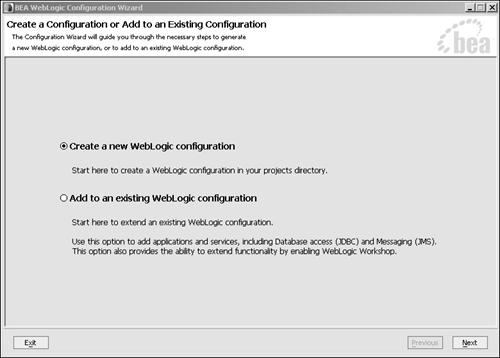
Select Create a New WebLogic Configuration and click on Next to go to the next screen.
The next form enables you to choose what type of domain you want to create. Select the Basic WebLogic Server Domain as shown in Figure A.2 and click on Next.
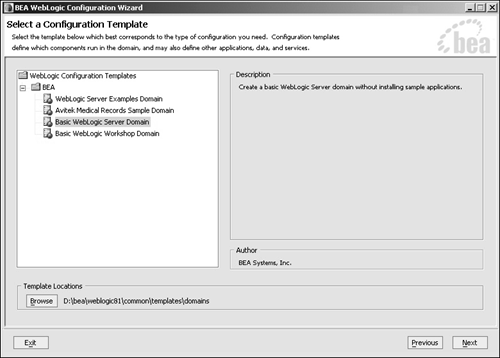
You now see a screen shown in Figure A.3 below that shows you an Express option and a Custom option. The Express option is a subset of the Custom option. We'll walk through the Custom Configuration option.
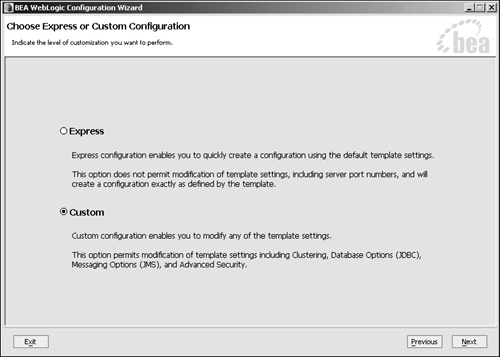
On the next screen as shown in Figure A.4, you define the name and ports for your WebLogic Server instance. We'll leave these as the default settings.
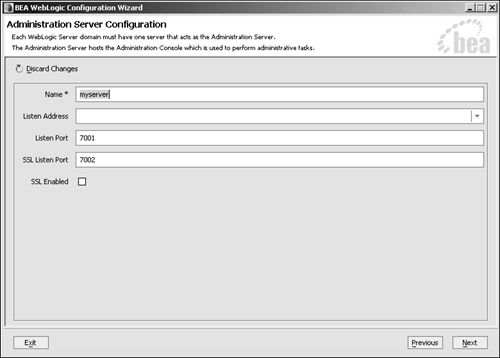
You're now presented with an option to configure multiple servers, define your cluster, and so on. This is shown in Figure A.5. For now, just select Skip and move on by clicking Next. If you want to set up a cluster, refer to page 1219.
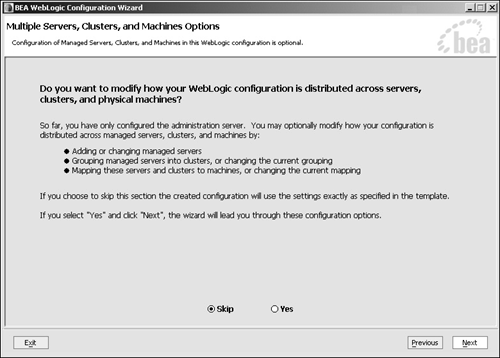
The screen shown in Figure A.6 asks whether you want to configure your JDBC components. We'll walk through this, so select Yes and click Next.
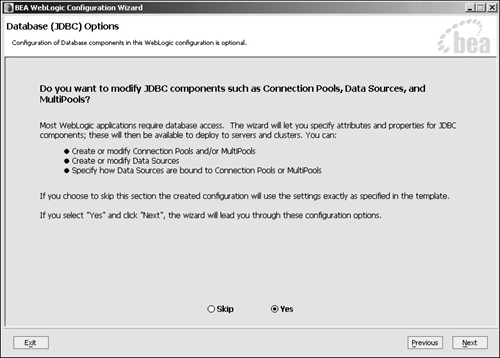
Click Add to add a new JDBC connection pool and specify its properties. An example is shown in Figure A.7. There are drop-down menus to help you with the driver settings and URL. Click Next.

The next screen as shown in Figure A.8 enables you to set up multipools. We'll ignore this for now. Click Next.
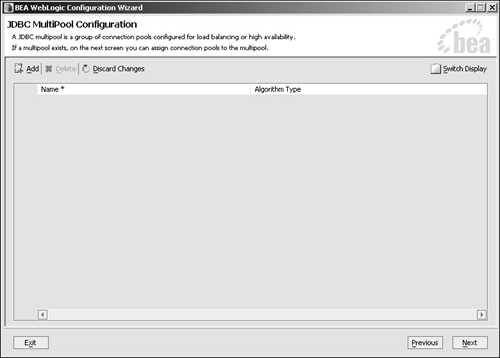
This screen, as shown in Figure A.9, is where you can set up data sources and transaction data sources. The settings are straightforward with drop-down lists to help you. For now, let's leave this alone. Click Next.
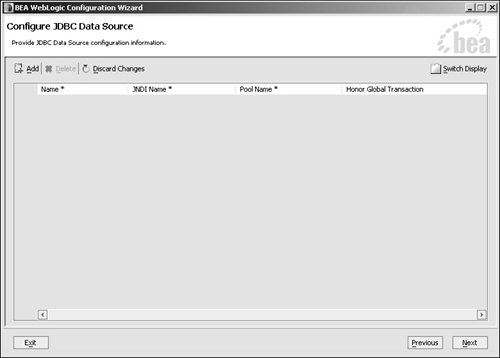
The next screen enables you to test your database settings. This is shown in Figure A.10. If your database is up and running (PointBase can start it from this user interface), you can test whether the connection is successful. Test your pool if you want to, and then click Next.

The screen shown in Figure A.11 enables you to choose whether you want to configure JMS components. Select Yes and click on Next.

Configure a JMS connection factory, as shown in Figure A.12. When you're done, click Next.
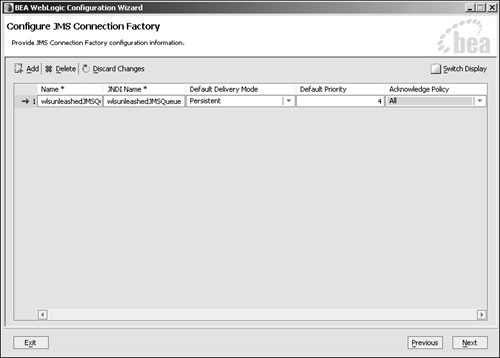
Configure a JMS file store if you want. When you're finished, click Next. This is shown in Figure A.13.
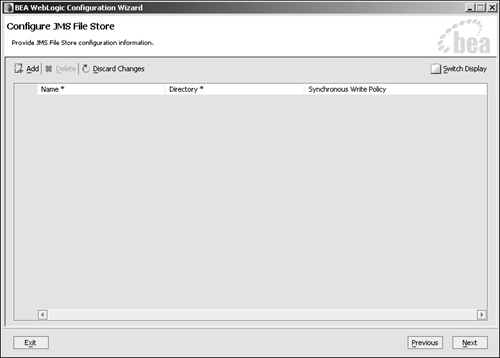
Configure a JMS JDBC store. I am leaving this as optional for you, because you can always do this later through the administration console. This is shown in Figure A.14. After you're done, click Next.

Configure a JMS server (shown in Figure A.15). When you've finished, click Next.
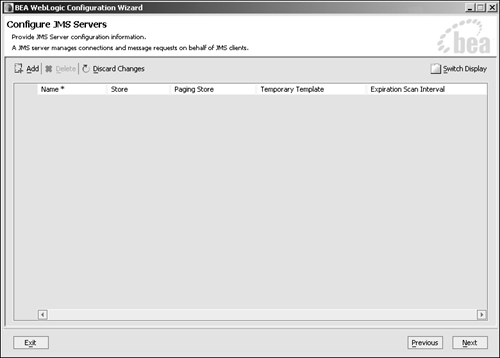
Figure A.16 shows the targeting section. It enables you to choose the servers on which each of the JDBC pools, JMS queues, topics, and so on are deployed. Select Yes and click Next.
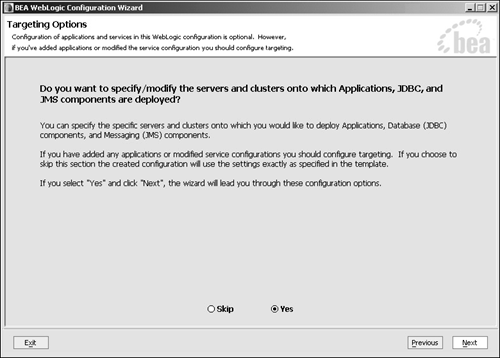
Assign a server to each of the JDBC pools and JMS destinations and click on Next as shown in Figure A.17.

The screen shown in Figure A.18 enables you to configure advanced security. You can create groups, users, and roles. Feel free to explore this, but for now it is okay if you skip it and click Next.

On the screen in Figure A.19, you must create a WebLogic administrator. For our sample domain, you can use weblogic/password. For production environments, you would want to use something less intuitive and more secure. After you enter these details, click Next.

The screen shown in Figure A.20 enables you to create shortcuts and deploy WebLogic as a service. For now, leave the defaults as shown in the figure and click Next.
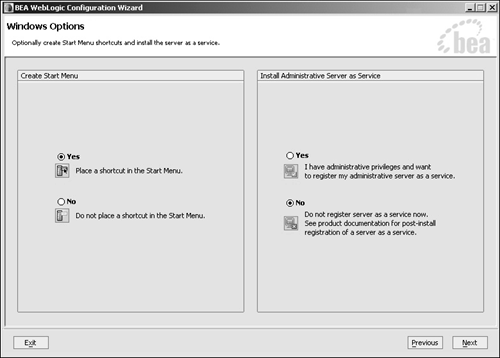
On the screen in Figure A.21, you define the start scripts and directories. You can leave the defaults for now and click Next.
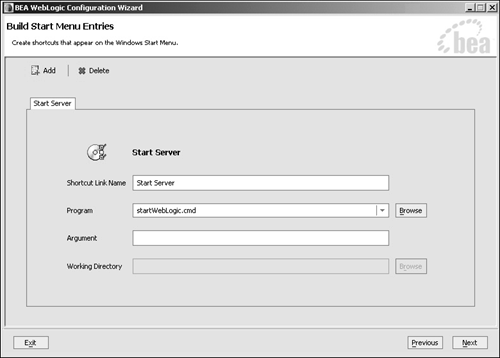
Now you select between development mode and production mode. You can also choose the JDK you want to use. For now, leave the defaults shown in Figure A.22 or change them as you want. Click Next when you're done.

You're almost done. Figure A.23 shows the last screen. Choose a name for your domain configuration. The default is mydomain. Click Create to create your domain. Click on Done and exit the Configuration Wizard.

Installation can be confirmed by finding the new /user_projects/mydomain directory under the BEA installation directory. If you've used WebLogic before, the structure will look familiar. Under the /mydomain directory is the /applications/ directory. Read the readme.txt file created in the applications directory for details on its purpose. If you elected to install the domain into the Windows Start menu from step 22, you can start the new server from that link. Otherwise, you can start it from a command prompt at
C:/bea/user_projects/mydomain/StartWebLogic.cmd
Now that a domain environment has been created, we can use it to host our Web and enterprise applications.
 |